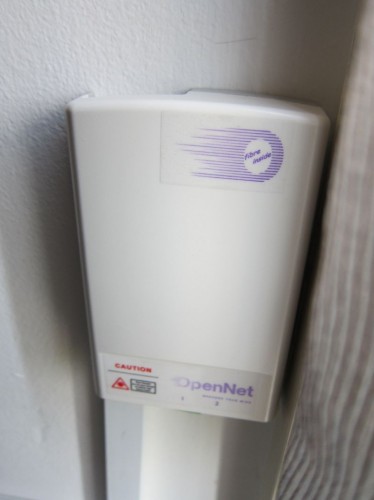Broadband users moving in to new homes in Singapore in the years ahead can expect their premises to be already hooked up by a fibre optic point, in addition to the cable TV and phone jacks they get now.
This means they won’t have to arrange for their homes to be wired up separately by national contractor Opennet. That has been a source of irritation for many users, some of whom have had to wait several weeks to activate their link before their fibre broadband service can be turned on.
The directive from the Infocomm Development Authority (IDA) on Wednesday is among a couple of changes that are aimed at improving connectivity in the country. Homes built from next month will have to feature the new connection points.
So far, 95 per cent of homes already are hooked up to the nationwide fibre network, and broadband prices are more competitive than ever before. Yet, problems with installation and connectivity often offer speed bumps for users looking to surf on the fast lane.
IDA hopes its new rules will solve some of these issues. New homes, it has also specified, will have their rooms internally wired up so they can fully enjoy the high speeds offered by fibre broadband and not be hampered by patchy Wi-Fi links.
That solves yet another headache for house-proud home users here, They often have to resort to laying unsightly cables to hook up other rooms in an apartment, or resort to Wi-Fi connections that are slow or prone to interference.
Indeed, the infocomm regulator went so far as to specify that new homes have to be wired up internally with Category 6 cables capable of carrying data at gigabit speeds. Most home users today sign up for only 100Mbps or 200Mbps fibre plans, which use only a fraction of that capacity.
Improving cellphone coverage
Separately, the IDA also directed building owners and developers to provide more space, say, in carparks or roof tops, for cellphone operators to set up equipment to provide better coverage.
This is in addition to existing regulations which already call for space to be given to equipment that serve residents in the property.
Effective next month, the new directive comes after all three operators here were fined for poor 3G coverage in December last year. SingTel, StarHub and M1 had said then that they had problems installing base stations to improve coverage.
By making it easier to set up base stations in buildings, IDA may not be as lenient if they continue to fail these tests in future. Of late, telcos have tried to improve their networks to cater to an explosion in usage.
On Monday, M1 said it was spending up to S$85 million to improve 3G coverage and network resiliency. It will upgrade its core infrastructure to an all-IP core network and also deploy a 3G network on the 900MHz band.
The telco had faced one of the most serious disruptions in Singapore in January, when a sprinkler set off accidentally at a network centre caused widespread issues for users for almost three days.








But so far the only service coming out of the fibre optic connection is an excellent internet service – but Isn’t that a massive underutilisation of resources? That single fibre can provide fixed telephony, TV, etc. Wonder when SingTel and StarHub will start delivering programs through fibre…Or have they started and I am not aware of it?
Yes, they do offer pay-TV over fibre now. Singtel has been doing it for a few years with its mioTV service, while StarHub started recently. https://www.techgoondu.com/2015/04/08/starhub-rolls-out-pay-tv-service-over-fibre-broadband/
Its not very clear when they say applies to new homes. As I’m still awaiting my EC, do you know if this new COPIF will apply to yet-to-TOP buildings?
Just to add, its in the midst of being built right now… and fibre optics is not stated in my sales contract (just the usual phone and cable points)
I think it’s not for current flats that are already being built. The change in the rules – in the new Code of Practice for Infocomm Facilities in Buildings – comes into effect on May 1. This means it only affects buildings that are designed and built after that.
Great news. Hopefully Singtel stickers don’t find their way onto the boxes this time.
Good point! 🙂